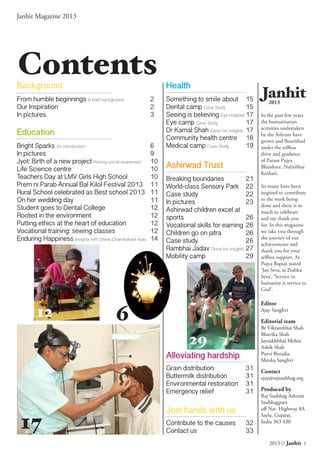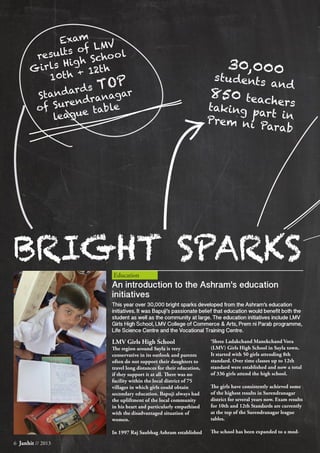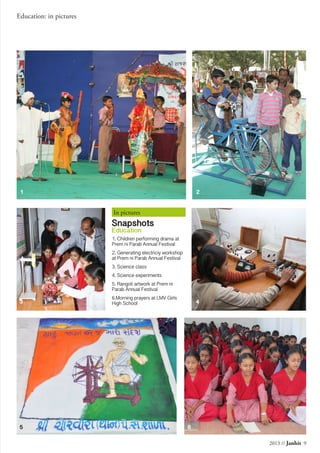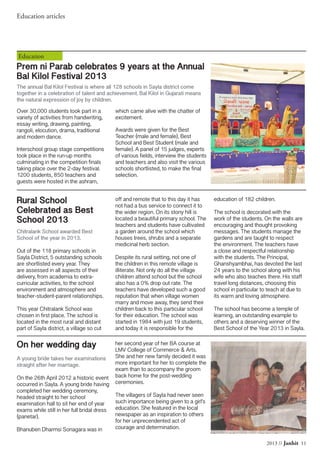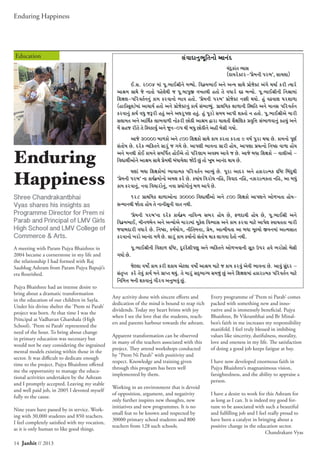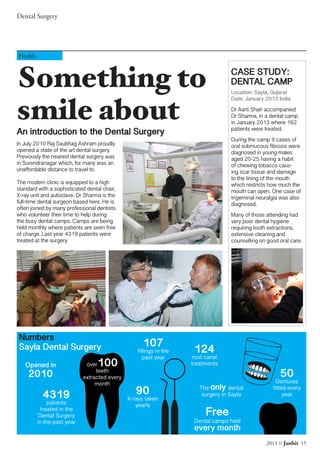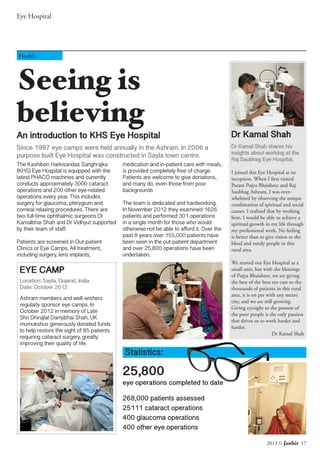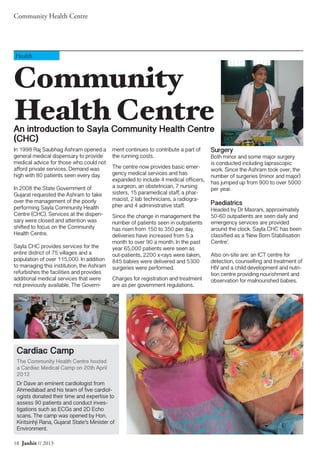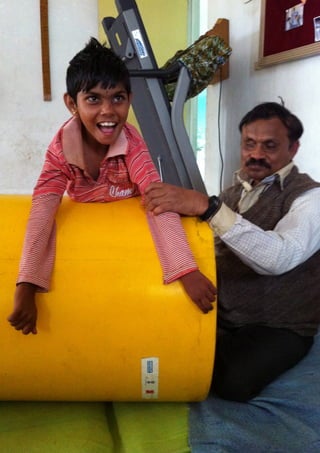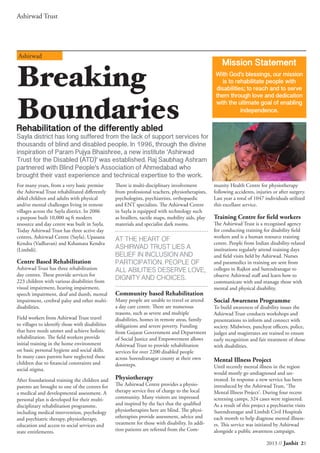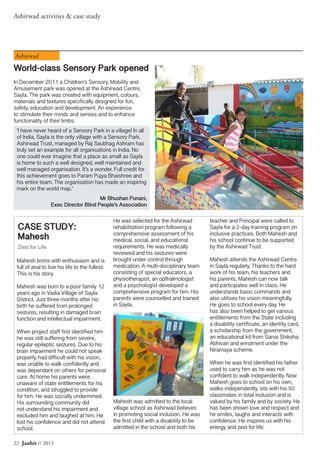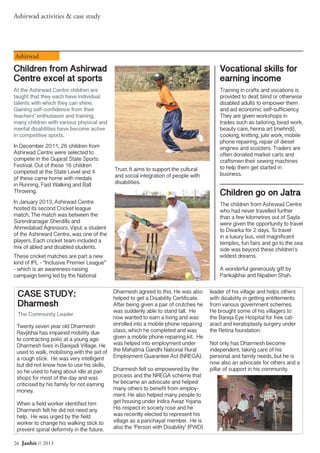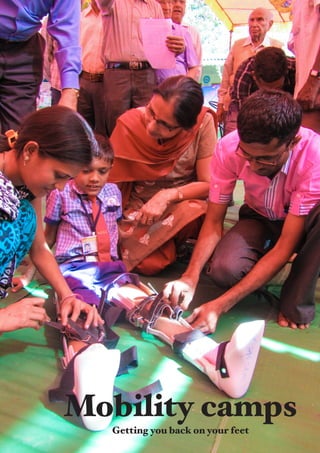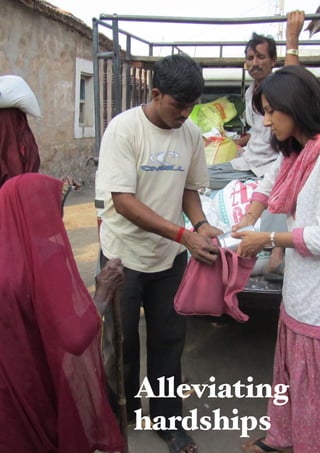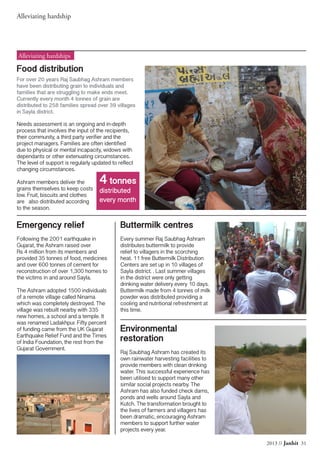This document summarizes the educational initiatives of Raj Saubhag Ashram in Sayla, Gujarat, India. It discusses the establishment of LMV Girls High School in 1997 which now has 336 students achieving top results in the district. It also discusses the opening of LMV College of Commerce & Arts in 2007 to provide higher education opportunities. The document further discusses the Prem ni Parab program started in 2004 to improve education quality in 47 local primary schools, and initiatives like the Life Science Center and vocational training. It highlights that over 30,000 students have benefited from these educational programs.


